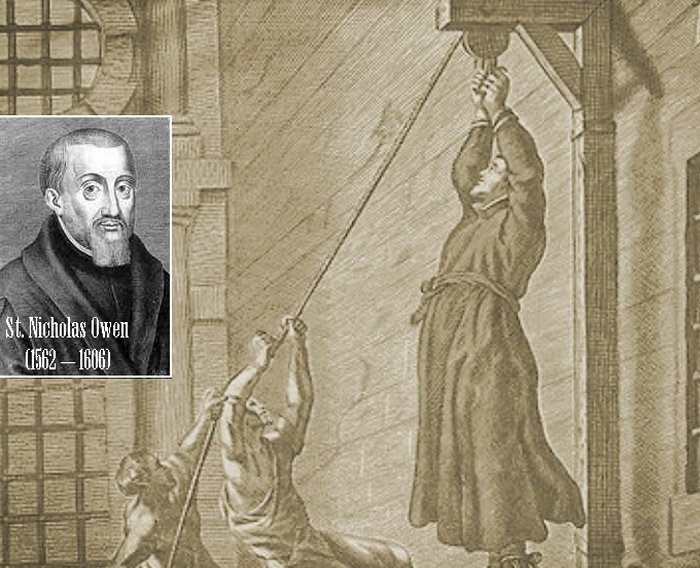Nicholas Owen ‘Little John’ Who Paid Highest Price For His Ingenious, Camouflaged Places To Hide
A. Sutherland - AncientPages.com - ‘Priest holes’ saved many lives of Catholic priests and became their sanctuaries in times of persecution during England’s Anti-Catholic times.
They were so unusual and perfectly camouflaged that they still surprised modern inventors and designers.
They were designed and created by St. Nicholas Owen (c. 1562 – 1/2 March 1606), a Jesuit, talented stonemason, and carpenter’s son from Oxford.
Owen was a defender of persecuted Catholics. He entered the Jesuit Order in 1588, and for the next 18 years, until his martyr died in 1606, he devoted himself to constructing safe and effectively concealed hiding places for priests in danger.
In these sanctuaries, built-in houses of Catholic families, priests, altar vessels, and related objects could survive.
Owen worked in dangerous times during the reign of Queen Elizabeth I of England (also known as "Good Queen Bess").
Historical records confirm that persecution of Catholics began before Henry VIII's time, when Pope Paul III refused to give him a divorce from Catherine of Aragon. This forced Henry to break with Rome.
Owen disguised the entrances to the priest-holes, with such skills that priests lived in them, protected from martyrdom, for years. Image credit: The Catholic Catalogue
Anti-Catholic persecutions continued during the reign of Elizabeth I (1558-1605) and included eliminating the celebration of Mass, recitation of the Rosary and Catholic prayers were forbidden at the risk of being extradited, priests would be sentenced to a year in prison, jailed for life or put to death, by hanging, drawing, and quartering.
Repression also affected those who did not swear allegiance to the English ruler and did not recognize his supremacy over the Church in England.
Another very harsh law was passed that punished with death any Catholic who should convert a Protestant.
Nicholas Owen—one of the most skilled builders of priest holes—devoted the greater part of his life to helping persecuted Catholics. He could accommodate up to 10 people in one hiding place, and none of his priest holes was the same.
In case of danger, the persecuted priests could escape by underground tunnels up to several kilometers away from the house. Several entrances and exits camouflaged the real hiding place.
Under the name of "Little John", "Draper" or "Little Michael", he often traveled from one house to another, and in exchange for only the necessities of life as payment, he created hiding places. During the daytime, Owen worked as a traveling carpenter and at nights built hide places camouflaged under basements, under floors, and between walls.
Famous priest-holes are found at Baddesley Clinton in Warwickshire, Naworth Castle in Cumbria, at Harvington Hall, near Kidderminster in Worcestershire, Ufton Court, near Reading, Scotney Old Castle in Kent, Oxburgh Hall in Norfolk, Thurnham Hall near Lancaster, Baddesley Clinton and Coughton Court in Warwickshire and many more.
Many Catholic priests survived thanks to people like Nicholas Owen, who sacrificed his life to hide them.
In “Secret Chambers and Hiding Places”, Allan Fea (1860-1956) wrote about Nicholas Owen’s work:
“With incomparable skill,” says an authority,
“he knew how to conduct priests to a place of safety along subterranean passages, to hide them between walls and bury them in impenetrable recesses, and to entangle them in labyrinths and a thousand windings…”
Many believe that some of them may still be undiscovered. Today, modern technology such as 3-D laser scanning may help uncover the ingenious work left by a 16th-century English martyr, Nicholas Owen.
Nicholas Owen was arrested in 1594 and interrogated, but despite torture, he did not reveal anything. Early in 1606, Owen was arrested a final time and placed in the Tower of London, where he was tortured to death by prison authorities.
He died in the night between 1 and 2 March 1606. In 1927, Nicholas Owen was beatified and finally canonized in 1970 by Pope Paul VI.
Updated on March 23, 2024
Written by – A. Sutherland AncientPages.com Staff Writer
Copyright © AncientPages.com All rights reserved. This material may not be published, broadcast, rewritten or redistributed in whole or part without the express written permission of AncientPages.com
Expand for referencesMore From Ancient Pages
-
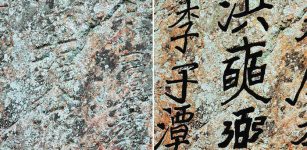 Ancient Graffiti On Sacred Mountain Reveals Secrets Of North Korea
Archaeology | Dec 3, 2021
Ancient Graffiti On Sacred Mountain Reveals Secrets Of North Korea
Archaeology | Dec 3, 2021 -
 Why Was Celebration Of Christmas, Easter, Midsummer And Saint’s Day Forbidden In Scotland?
Ancient History Facts | Dec 5, 2024
Why Was Celebration Of Christmas, Easter, Midsummer And Saint’s Day Forbidden In Scotland?
Ancient History Facts | Dec 5, 2024 -
![Horses in the Eurasian steppes: Already 5000 years ago, they served pastoralists as a source of milk and a means of… [more] © A. Senokosov](https://www.ancientpages.com/wp-content/uploads/2021/09/pastoraliststeppe15-307x150.jpg) Milk Enabled Massive Steppe Migration – A New Study
Archaeology | Sep 24, 2021
Milk Enabled Massive Steppe Migration – A New Study
Archaeology | Sep 24, 2021 -
 On This Day In History: King Alexander II Was Crowned At Scone, Scotland – On Dec 6, 1214
News | Dec 6, 2016
On This Day In History: King Alexander II Was Crowned At Scone, Scotland – On Dec 6, 1214
News | Dec 6, 2016 -
 Ancient City Of Koh Ker Was Occupied Much Longer Than Previously Thought
Archaeology | Oct 12, 2018
Ancient City Of Koh Ker Was Occupied Much Longer Than Previously Thought
Archaeology | Oct 12, 2018 -
 Remains Of An Ancient Seaport In Asini, Greece Discovered By Underwater Archaeologists
Archaeology | Mar 12, 2025
Remains Of An Ancient Seaport In Asini, Greece Discovered By Underwater Archaeologists
Archaeology | Mar 12, 2025 -
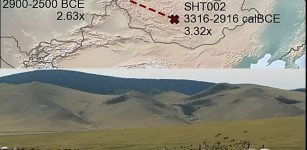 Revealing Relatives In Ancient DNA With Unprecedented Precision
DNA | Dec 22, 2023
Revealing Relatives In Ancient DNA With Unprecedented Precision
DNA | Dec 22, 2023 -
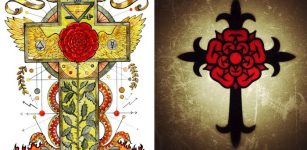 Rose Cross – Powerful Symbol That Existed Long Before Christianity
Ancient Symbols | Dec 3, 2017
Rose Cross – Powerful Symbol That Existed Long Before Christianity
Ancient Symbols | Dec 3, 2017 -
 European Mythical Creatures Encountered In The Witcher Series
Featured Stories | Feb 4, 2020
European Mythical Creatures Encountered In The Witcher Series
Featured Stories | Feb 4, 2020 -
 Sacred Healing Earth Of Chimayo And The Mysterious Black Christ Crucifix
Featured Stories | May 24, 2019
Sacred Healing Earth Of Chimayo And The Mysterious Black Christ Crucifix
Featured Stories | May 24, 2019 -
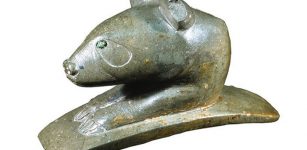 Use Of Tobacco Pipes By Hopewell People Tells A New Story
Archaeology | Jun 28, 2021
Use Of Tobacco Pipes By Hopewell People Tells A New Story
Archaeology | Jun 28, 2021 -
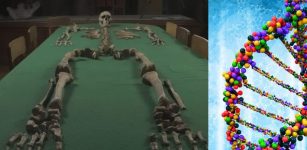 DNA Reveals Stone Age People Avoided Inbreeding
DNA | Mar 9, 2024
DNA Reveals Stone Age People Avoided Inbreeding
DNA | Mar 9, 2024 -
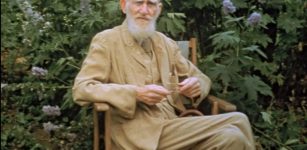 On This Day In History: George Bernard Shaw Died – On Nov 2, 1950
News | Nov 2, 2016
On This Day In History: George Bernard Shaw Died – On Nov 2, 1950
News | Nov 2, 2016 -
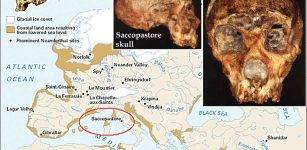 Neanderthals Were Present In Italy Much Earlier Than Previously Thought
Archaeology | Nov 6, 2015
Neanderthals Were Present In Italy Much Earlier Than Previously Thought
Archaeology | Nov 6, 2015 -
 Sed Festival – Ancient Egyptian Ritual Tested Pharaohs
Ancient History Facts | Mar 28, 2018
Sed Festival – Ancient Egyptian Ritual Tested Pharaohs
Ancient History Facts | Mar 28, 2018 -
 Excavations of the Aşıklı Mound, Cappadocia , Turkey
Civilizations | Aug 22, 2015
Excavations of the Aşıklı Mound, Cappadocia , Turkey
Civilizations | Aug 22, 2015 -
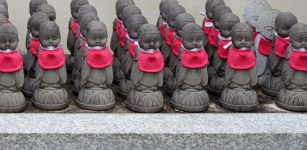 Jizo – Protector Of Children, Travelers And Women In Japanese Mythology
Featured Stories | Dec 23, 2015
Jizo – Protector Of Children, Travelers And Women In Japanese Mythology
Featured Stories | Dec 23, 2015 -
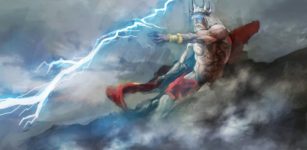 Zeus – ‘Cloud Collector’, God Of Order, Law And Justice – Most Powerful God Of Olympian Pantheon
Featured Stories | Jan 3, 2019
Zeus – ‘Cloud Collector’, God Of Order, Law And Justice – Most Powerful God Of Olympian Pantheon
Featured Stories | Jan 3, 2019 -
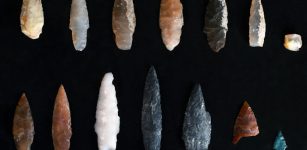 Oldest Known Projectile Points In The Americas Discovered In Idaho
Archaeology | Dec 23, 2022
Oldest Known Projectile Points In The Americas Discovered In Idaho
Archaeology | Dec 23, 2022 -
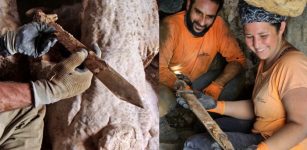 Four Rare And Incredibly Well-Preserved 1,900-Year-Old Roman Swords Found In Judean Desert
Archaeology | Sep 6, 2023
Four Rare And Incredibly Well-Preserved 1,900-Year-Old Roman Swords Found In Judean Desert
Archaeology | Sep 6, 2023

